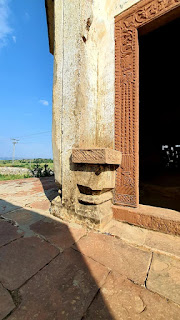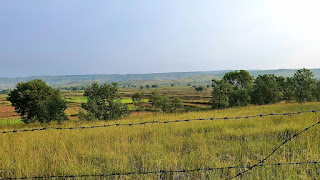Long ago, in 1965, when I was 10 years old, I was travelling with my father in the beautiful mountains of the Salt Ranges. We were traversing the 14 kilometres from Khewra to Wahulla on foot. On a whim, my father took an alternate route to meet relatives in Choa Saidan Shah, a beautiful town surrounded by hills. I was happy because the detour meant we would spend a few extra hours in the lush, green pastures.
Choa Saida Shah was a dream land, and a stream flowing through the heart of this hilly paradise was its most idyllic feature. The stream's water level was four to five feet below the ground. Some ancient people had erected a wall of white and red stones to preserve the stream’s natural beauty and purity for future generations to enjoy the fresh waters. After crossing the town, the stream would run westwards through the beautiful landscapes of the famous Salt Ranges, ultimately mingling with the Jhelum River.
It was time for prayers when my father and I arrived at Choa Saida Shah, so my father performed ablutions along the bank of the stream, under the cool shadow of eucalyptus trees. He offered his prayers there, too, while I quenched my thirst and bathed in the cool fresh water. Even 45 years later, I can feel the coolness of that water in my soul.
Forty-five years on from that day, I found myself standing on the banks of the same stream, now pressing a handkerchief to my nose to stop from inhaling the most noxious odours I have ever encountered. With a severe tug of grief and agony, I realised that I had lost my paradise forever.
With a broken heart, I began to stroll along the stream, and with every step, the smell worsened, soon becoming unbearable. Then, at a distance, I saw more than 50 white and light brown swans swimming in the black, dirty sewerage water that now coursed where a clean stream had been. They clearly had no other option.
Continuing my walk, I observed that the mountains encircling the valley had been set on fire, eliminating wildlife, beautiful birds, and plants.
It also became apparent that, on rainy days, when the stream’s water level rises, floating garbage, torn clothes, and multicoloured shopping bags get caught on the lower branches of the trees standing on both banks. Moreover, foam pieces used by shopkeepers for packing had accumulated on tiny islands within the stream, making the landscape seem even uglier.
Turning away from the stream, I realised the source of this environmental degradation. One bank of the stream is fully populated by wooden cabins and shops. The shopkeepers who work and reside here litter the stream day and night with garbage, rotten meat, vegetable waste – even animal carcasses can be seen floating downstream. The municipality employees themselves do not desist from using the stream as a huge garbage bank.
I have always thought that purity of mind, which is essential for clear reasoning, artistic inspiration, and wisdom, has to stem from a pure environment. For this reason, in the reflection of the black and murky water of this polluted stream, I expect to see the dark future of those inhabiting Choa Saida Shah.
Since my childhood, I have played along this stream, swum in it through the hot summers, and drunk its clean, sweet water. If I were to tell my children about those days, they would not believe me. Today, Choa Saida Shah is no longer a dream land; it is a filthy town with a sewerage canal flowing through it. Sadly, this misfortune is not limited to the Kahoon Valley of Punjab’s Chakwal district – all the ponds, streams, springs, and rivers of this country face similar man-made calamities.
The responsibility for the extent of environmental damage does not lie on the leadership alone. Our intellectuals do not research, study, or publish anything on the environment. Our artists ignore this aspect of the nation’s plight. Even our religious preachers, who stress bodily cleanliness, have never spoken a word about the sacred responsibility to keep the environment clean as well. They never mention the paradise we have here on earth, and that we are slowly depriving ourselves of. They say destiny will decide everyting.
It seems, however, that pleasant walks in the hills and vales of Kahoon Valley, through green grass, under white clouds, towards clear waters, do not lie in the destiny of future generations of Pakistanis.
Tanvir Kausar Mughal is a freelance writer.






































































































No comments:
Post a Comment